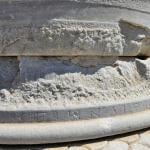
A nifty advantage to Christianity is that while revelation helps our reason to some sensible answers, these open us to better questions. We are left with options and a cosmos to explore. That’s why we can argue amongst ourselves and this is only a problem when we lose love as our guide.
I am a Christian, but when it comes to questions where Christians have options I am a Platonist. What does that mean? I think the world we see is real (not just in our heads), but that the world we see and experience with our bodies is patterned on something. One way of describing this is that the “real world” is a copy of an Ideal.
The easiest place to find this idea is in Plato’s book Timeaus. This book helped people see the importance of mathematics to modeling the cosmos and was instrumental in Western Christians developing the ideas that caused the Scientific Revolution. Plato often talks about the Ideal as if each object (puppies, presidents, planets) are images of a Form. All roses are recognizably alike, because they share in the form of rose. The form is the thing where we see the essence of a rose.
While this answers some questions, it raises even better ones! Here’s one just asked by a bright honor’s student at Crown College:
How do you think Plato would categorize forms: one category of forms (tree) or multiple categories of forms (birch, maple)?
Scholars disagree about how Plato answers this question. He talks as if there are forms for many objects, but in other dialogues he has his characters point to some abusurdities this causes and (at least!) one serious philosophical problem. Does he Plato believe there is a form of mud? More serious is the “Third Man” problem posed by Plato himself in his dialog Parmenides. If two men have the Form of Man in common, what does one of the men and the Form of Man in common? The Form of the Form of Man?
This could go on for a long time!
Most wonderful is noting how Plato was willing to subject his best ideas to criticism. Since he was the best living thinker, he subjected his ideas to his own criticism! Some readers think Plato abandoned the idea of forms after Parmenides, but Timeaus was written after Parmenides (almost surely) and Timaeus assumes a theory of forms. Others suggest Plato ended up confused, unsure how to answer the complaint he had raised.
I think the examples of forms such as trees are to help us get the general idea, but do not mean Plato thinks there are forms for trees or any other object (puppies, presidents, or planets!). There is only one form for Plato, the Good or The One and that Form gives shape to all of our “reality.” The difference between objects comes to be in the way matter responds to the Good, the time the matter responds, and the place where the matter is located.
The Good is what gives form to all the cosmos and that Good is either God Himself or exists as an idea in the Mind of God. Thanks be to God, the craftsman who gives matter shape!
————————-
*The remarkable chair of the Honors Program had some questions for me based on my book When Athens Met Jerusalem. If I get to them all, there are twenty-two questions. Here is: 1, 2, 3, 4, 5, 6, 7, 8,9.











